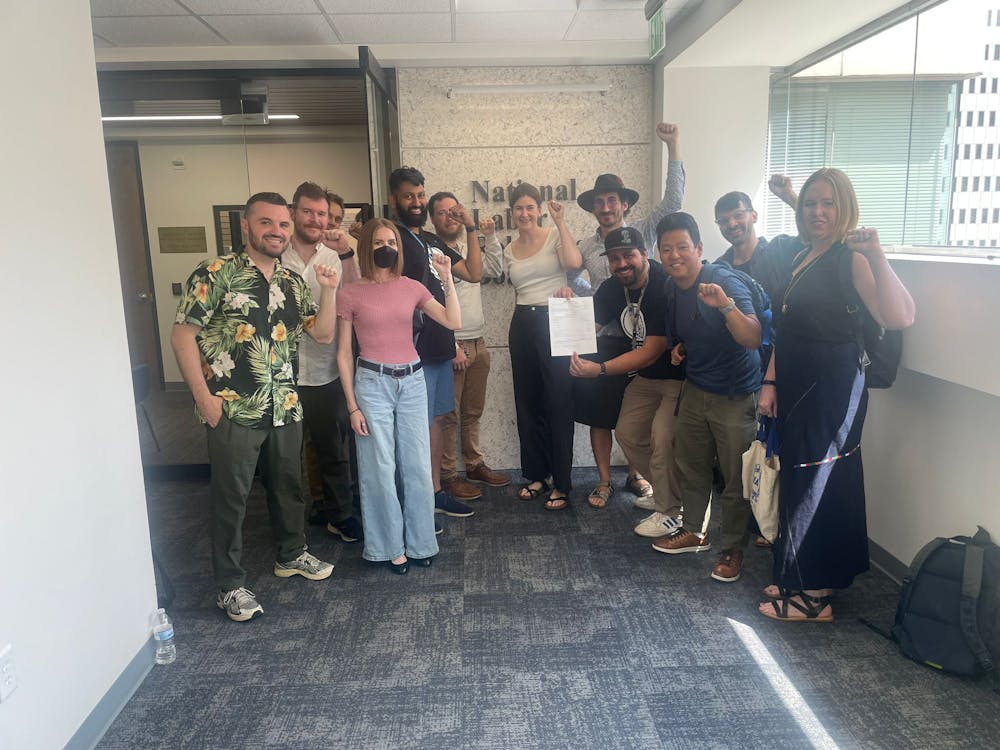After a 50-year teaching career including 39 years at Hopkins, Dr. Bruce Barnett, a professor in the Department of Physics and Astronomy, will retire at the end of 2014.
Barnett has contributed to several major research discoveries in particle physics. He was a member of the teams that first characterized the tau lepton in 1975, the top quark in 1994 and the Higgs-Boson particle in more recent years.
“Now the research teams are big teams, but when we found the top quark there was a smaller group of people. I was very intimately involved in the project,” Barnett said. “[The top quark] was very difficult to find, so that was probably the most exciting. This Higgs business of two years ago was a bigger group, and the younger people were more involved than I was.”
Barnett described his start in science and the beginning of his research path.
“I grew up on a farm in Ohio,” Barnett said. “I did reasonably well in my courses. A teacher said, ‘You could be a physicist.’ I didn’t know what a physicist was; I never met a physicist. By some quirk of fate I got into Harvard University. I went off, and I said I was a physics major. I never knew what a physicist was, but I was a physics major. And I’ve been a physicist ever since.”
Barnett is known for his accomplishments in the classroom as well as in the lab. He has received several teaching awards from the University of Maryland (where he received his Ph.D.), Johns Hopkins and the Maryland Association of Higher Education.
“I’ve taught juniors and seniors and grad students and so on,” Barnett said. “The last 15 years or so, I was in charge of attaching faculty to courses, and I think I like teaching general physics more than many of my colleagues like teaching [introductory courses]. When I was organizing the courses and so on, it was easier to do it myself than to get someone else to do it. But I enjoy it. I like the students. I think it’s fun to stand up there and do demonstrations.”
Barnett has developed a method of organization that makes teaching large, introductory courses easier.
“When you have 240 students in the class, general physics takes more time than the upper level courses. But I like the students, and if the students know what is expected, if you lay out very clearly how it’s graded, they know as they are going along how they’re doing, and there are no surprises at the end of the term. This generally goes well. If the students don’t know what’s happening, then at the end of the term the grades are much lower than they think, [and] you get a lot of complaints. And you don’t want that,” Barnett said.
Barnett’s enthusiasm for teaching physics has expanded to improving physics education at the high school level.
“We have a program within the particle physics group that’s called Quarknet, and that involves getting high school teachers to come [to Hopkins]. It’s a program from the National Science Foundation and the Department of Energy. We try to bring the teachers up to date on modern physics, not just particle physics,” Barnett said.
Barnett hopes Quarknet will help spread accurate and current information to high school students.
“If the teachers in the high schools know physics better, then they would be able to teach their students better,” Barnett said. “Particularly if students see a headline in the newspaper that says, ‘Physicist finds Higgs-Boson,’ and they ask, ‘What’s a Higgs-Boson?’, we’d like the teacher to be able to have some idea as to what these things are. We’ve been involved in it for nearly 15 years now.”
Barnett was instrumental in the founding of the annual Physics Fair in 2003. The idea for the Physics Fair came from a high school teacher who participated in that year’s Quarknet.
“The question came about of whether we should interact with the community more, and one of the teachers who had come from Colorado suggested that we could start a program like the Physics Fair. It was an outgrowth of our Quarknet Program,” Barnett said.
Barnett described the Physics Fair as a model in which other University departments might take interest.
“There are a lot of demonstrations, lots of things to see and talks and contests and so on. It’s fun. It’s something some of the other departments could emulate,” Barnett said.
Barnett’s foremost motivation for studying physics, from his beginnings in Ohio to his final semester at Hopkins, has been to answer the broad questions of existence.
“My interests have always been, ‘Why are we here?’, ‘How did we get here?’ [and] ‘How does this all work?’, and I think physics, especially particle physics, has come to be very closely related to astrophysics to the extent that human scientists have found [out how] our universe works. You get into cosmology very quickly. It’s big questions. You only get so far, but that was my motivation,” Barnett said.




